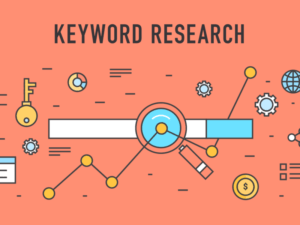SaaS companies rely on digital marketing, among other marketing strategies, to reach customers and cement their reputation online. If you have a SaaS product and are investing in SEO efforts, you must already know how critical SEO is for your promotion, brand name, and revenue growth.
However, what you may not know is how some common SaaS SEO mistakes may be costing you big time in terms of customer loss, revenue constriction, and more. On the other hand, if you avoid these loopholes, you can generate more website traffic through good organic search ranking and reach more clients successfully.
To hit the bull’s eye, the first step is to keep these 6 SEO mistakes to avoid in mind and then circumvent them like a pro:
- Not doing your keyword research
- Not understanding the user’s search intent
- Not optimizing content
- Poor link building
- Not paying attention to technical SEO
- Skipping meta descriptions and alt text
Contrary to popular belief, SaaS SEO is more than just keyword research. It can be complicated, but investing time and effort into your content marketing strategy pays off. Through it, you can meet all the ranking factors on google search, satisfy the search intent of potential customers and deliver high-quality SEO content.
From an excellent return on investment compared to other marketing channels to reduced customer acquisition cost, SaaS SEO can take you places—but only if you do it right. So let’s explore the loopholes to avoid so you can get the best results from your SEO efforts.
6 Common SaaS SEO Mistakes
1. Not doing your keyword research

One cannot downplay the importance of keyword research when it comes to SaaS SEO. However, many SaaS companies make the mistake of not conducting comprehensive keyword research before developing their content. As a result, they may write great content and post it on their website, but without SEO optimization, they may not see website traffic or improve their search ranking on Google.
So, make sure to perform comprehensive keyword research before starting to develop your content. Follow best practices such as using short and long-tail keywords and search intent targeting keywords, in addition to ensuring topical depth and relevance. Also, conduct search volume research when doing your keyword research, which enables your content to get improved traffic and Google ranking.
Combined, these keyword strategies will allow customers looking for specific search queries to find you online easily. You can boost your website traffic by complying with google’s algorithm.
2. Not understanding the user’s search intent

While investing time and effort into your content marketing practice, you may overlook a critical aspect: the user’s search intent. Well, it is imperative to consider what your target audience is looking for when developing your content.
After all, it is what will allow them to land on your page. And even if they do land on their page only to find that your content does not answer their questions, they may leave dissatisfied. Your efforts in developing high-quality content are likely to go to waste in this case.
So, consider all the things a user may be looking for when typing a search query into Google’s search bar – informational, navigational, transactional, and commercial. Then focus your SEO efforts on answering these queries through your content pieces.
Your landing page must satisfy users’ search intent; otherwise, it is likely to get bogged down by the various google algorithms and rank lower on Google search ranking.
3. Not optimizing content

This is one of the biggest mistakes SaaS companies can make when working on their digital marketing plan. Forgetting or simply overlooking the need to optimize content can impact your ROI (return on investment). Unfortunately, some make the mistake of thinking that content optimization is only about adding the correct number of keywords. However, that is not going to help you cut it. Content optimization is a more comprehensive undertaking than that.
To ensure proper content optimization, start with doing audience research in addition to keyword research. Follow it up by meeting users’ search intent through your content, as it will boost your content metrics and improve your google search ranking. Don’t ignore steps such as analysis of user behavior, as it will enable you to enhance user engagement on your content pieces. Lastly, conduct a thorough competitor analysis to discover aspects of their content structure, link-building practices, and media used. Up their level through modernizing your content marketing practices.
Optimization will help your content rank higher and secure results, including greater ROI, website traffic, and conversion.
4. Skipping meta descriptions and alt text

Most content pieces contain a mix of content and images – that’s a sound way to structure your blogs. Despite that, adding meta descriptions and alt text are those parts of content marketing strategies that most companies ignore without realizing it costs them an organic searching ranking and website traffic. Avoid falling into this loophole by learning why meta descriptions and alt text are important to improve your online visibility.
The importance of meta description cannot be overemphasized as it directly impacts the success of your SEO efforts. Consider it a kind of advertising copy that gives your audience a sneak peek into your content and compels them to read further. In addition, a crisp and convincing meta description has the power to improve the CTR (click-through rate) of your website, allowing more people to land on your webpage.
On the other hand, alt text is that tag used to describe images and their attributes. It appears on the web page in case the image does not load. Adding alt text forms part of image SEO. It ensures your content has greater accessibility for visitors unable to view your images for one reason or another. In addition, you can add long tail keywords as your alt text to images, enabling your content to rank on google image search and allow visitors to find you from multiple channels.
5. Poor link building

Many SEO efforts do not garner the expected results because of bad link-building practices. You may be following ill-advised practices such as paying for links (which is okay for paid advertising but not to get organic search results) or commenting on blogs (an outdated method of getting backlinks). Other mistakes include not creating link-worthy content (which will dissuade other websites from referencing your page on their website), poor internal linking strategy, and not fixing broken links on your landing pages.
Per Google’s algorithms, link building is certain to get you good results. The solution to link-building problems is to know its best practices and follow them religiously to ensure better website traffic and sales. Make sure to include backlinks or external links as well as internal links in your content.
Done right, link building can build your audience’s interest, gain Google’s trust and establish you as an online authority in your industry. Good link building will help improve your visibility online and loyal customers in the long run.
6. Not paying attention to technical SEO

We get it—technical SEO is not a piece of cake. Not everyone is into exploring this complicated aspect of SaaS SEO strategy. However, this is an SEO mistake to avoid if you want to give your audience a streamlined user experience and hope to convert them into customers.
Technical SEO is all about ensuring your website’s navigability. It is a subcategory of SaaS SEO that focuses on your website’s infrastructure to make it easy to crawl and index for Google (and other search engines). It includes such aspects as URL structure, sitemaps, schema, page speed, and site navigation, among other things. Consider website design or technical SEO as a critical complement to your content and pay an equal amount of attention to it.
You can make your website technically optimized and gain greater website traffic and boost your organic search ranking by ensuring its design and navigation are user-friendly. Also, look into mobile compatibility; today, half of the website traffic comes from mobile phones.
Conclusion
Per BrightEdge, SEO drives more than 1000% higher traffic than social media. Not only that, but 70% of marketers count SEO as being more impactful than pay-per-click, according to Databox. So it’s no wonder SaaS companies invest bucks and brains into the SaaS SEO and content marketing process.
Now that you are aware of the common SaaS SEO mistakes to avoid, we hope you are ready to take this bull by its horns and get on top of your marketing strategies – specifically SEO content marketing – to secure long-term benefits. To reiterate, by upping your digital marketing game, you will not only improve your google search ranking but also attract more leads and convert them into loyal, paying customers.
If you’re now looking for professionals to help you avoid SaaS SEO mistakes and boost your SEO efforts, reach out to us at Stratigia. We specialize in SaaS SEO and offer comprehensive content marketing strategies with keyword research, link building, technical SEO, and detailed reporting, among other things, to catapult SaaS companies to greater success. Of course, it all begins with the first step in the right direction. We wish you luck!




